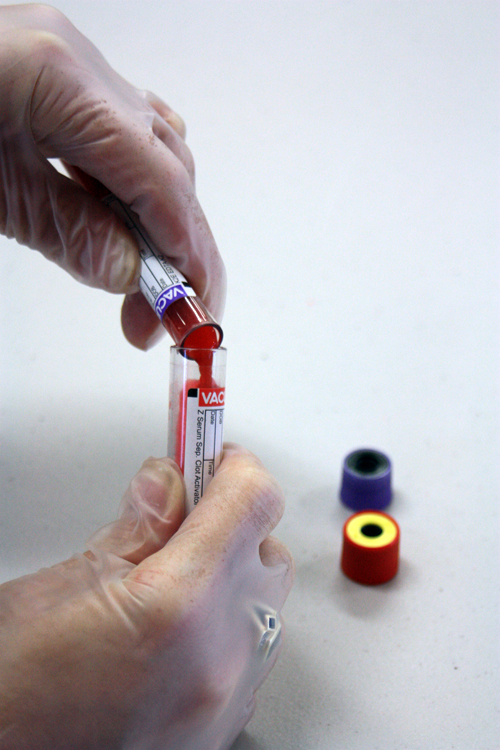Your Lab's Potassium Results:
Do Physicians Question Their Accuracy?
 Few components of the blood are as vulnerable to blood collection, handling, and processing (preexamination) errors as potassium. In fact, Young's Effects of Preanalytical Variables on Clinical Laboratory Tests lists over 50 preventable preanalytical conditions that cause a potassium level to be falsely elevated. Do you contribute to inaccurate potassium results when you draw, transport, handle, or process blood samples? Critique yourself with this list of just 10 of the many errors that can lead patients with normal potassium levels to appear elevated, and patients with dangerously low levels to appear normal:
Few components of the blood are as vulnerable to blood collection, handling, and processing (preexamination) errors as potassium. In fact, Young's Effects of Preanalytical Variables on Clinical Laboratory Tests lists over 50 preventable preanalytical conditions that cause a potassium level to be falsely elevated. Do you contribute to inaccurate potassium results when you draw, transport, handle, or process blood samples? Critique yourself with this list of just 10 of the many errors that can lead patients with normal potassium levels to appear elevated, and patients with dangerously low levels to appear normal:
- Recentrifugation — spinning gel tubes a second time has been found to increase the potassium level by 47%.
- Inadequate centrifugation — without enough g-force, platelets can remain in the serum. Because platelets release potassium, they can contribute to the concentration in the serum to be tested, presenting an erroneous impression to the physician of the patient's physiology.
- Spinning tubes with stoppers off — this technique has been shown to increase potassium levels in the specimen to be tested by 135 percent.
- Delayed centrifugation — red cells, which have 25 times as much potassium as the serum or plasma they're swimming in, will leak K+ once they leave the body. Within two hours, the serum/plasma in the tube is significantly higher in the electrolyte than what's really in the patient.
- Chilling tubes before centrifugation — the mechanism that keeps potassium inside the red cells slows to a crawl at chilled temps. Refrigeration is for vegetables, not blood that will be tested for potassium unless the serum or plasma has been separated from contact with the cells.
- Hemolysis — red cells are rich in potassium. When they rupture because of poor collection or handling techniques, it adds to the total concentration in the serum or plasma to be tested and reported.
- Pouring blood from one tube to another — pouring contents from an EDTA tube into a tube to be tested for a profile that includes potassium is like spiking it with pure potassium. Okay, that's an exaggeration, but still. It's a really, really bad idea.
- Incorrect order of draw — when filling EDTA tubes before filling tubes to be tested for K+, enough blood can carry over by the needle that pierces the stopper to spike the potassium to grossly distorted levels.
- IV contamination — many IVs infuse potassium. When drawing from a vascular-access device or above a temporarily discontinued IV, you risk contaminating the sample with enough residual K+ to confuse the physician.
- Fist pumping — having your patient pump his/her fist to make veins more pronounced can increase potassium levels up to 20%. That's enough to push a normal level into a panic range, or spike life-threateningly low potassiums into a normal range. Fist pumping in patients has been reported to be responsible for one-third of all elevated potassiums, and half of those that require immediate physician notification.

More educational materials to help restore trust in your lab's K+ results:












